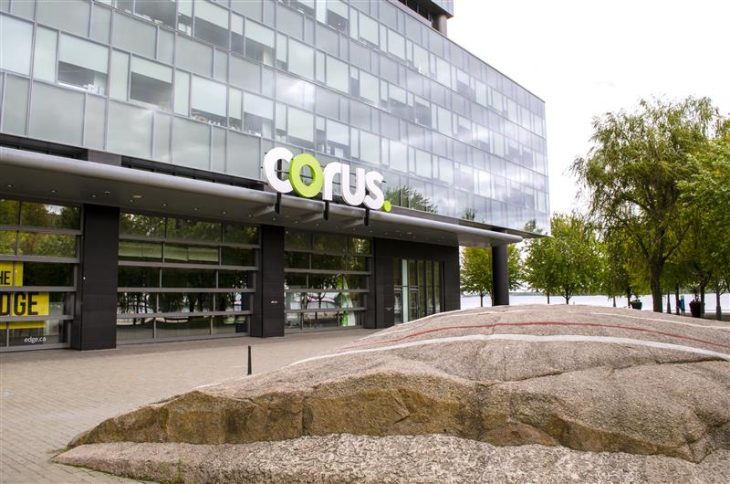
Channel closures could contribute significantly to possible double-digit sub declines
By Ahmad Hathout
Corus executives are looking forward to the end of the Toronto Blue Jays’ World Series run, as the millions of Canadian eyeballs on the team have, at least temporarily, pulled advertisers away from the media company’s properties, its CEO and interim CFO said Thursday.
When asked about the 23-per-cent dip in advertising this fourth quarter compared to last year’s, John Gossling said the postseason run by the nation’s only big league baseball team has definitely had an impact.
“The audiences for Blue Jays domestically have been massive, more than five million a night if you look at all the combined linear networks,” Gossling said. “So I think for sure that’s having an impact. When you look at who those advertisers are in those games, there’s a lot of common threads between what we see there and who our advertisers are. So it’s like a very short-lived in a way, and very sort of compressed Olympics, because what will happen in Olympics is that advertisers will go in big into that programming, and then they’ll kind of stay away from other places, because, well, frankly, that’s where the viewers are. So I think it’s having an impact.
“It’s not like we’re seeing a lot of advertisers canceling, but we’re definitely seeing a hesitation just to book in the first place. So I think there could be a bit of a relief out there,” he added, alluding to the fact that the series ends this weekend at the Rogers Centre.
That said, Gossling noted that the company is more looking forward to stability on the international trade front. “I think that will unlock a lot more … that’s a big piece of it,” he said. “So, you know, we’ve got some new leadership in the sales area. We’re really working hard to unpack all the pieces. Digital is obviously a big part of it. We need to look at what’s going on with demand, and frankly, you know, we need to be out creating demand if we can. And I think we’re doing an okay job against the market.”
Television advertising revenues were $88.7 million, and subscription revenues were $110.3 million, down six per cent compared to the same period that ended August 31 last year.
The August end to the quarter means the impact of the five kids channels that were pulled on September 1 will be felt in the new year. Gossling said the closures – a total of eight over the past year – could make up more than half of the possible high single or low double-digit subscriber declines next year. But he said that’s the trade-off for cutting down on the high programming costs that didn’t make sense relative to the viewership the channels were pulling in.
Total television and radio revenues were down 14 and 10 per cent, respectively, year-over-year to $213 million and $19.3 million, for an aggregate revenue decline of 14 per cent to $232 million.
Television profit was also down 34 per cent in the comparable period to $30.1 million, but radio was up 85 per cent to $2.6 million due mainly to cost-efficiency measures.
The media company announced Wednesday that it secured an agreement to increase the amount it can borrow from $75 million to $125 million. It is now banking on some assistance from other regulatory funding mechanisms for its Global news product.
Gossling pointed to two key funds: the $100-million Google news fund and the Independent Local News Fund (ILNF), for which Corus recently qualified. The ILNF has two components: the portion that BDUs fund and the portion that streamers put in, but that has been held up by the court on appeal.
Gossling said the company in the quarter had secured some $4 million from the BDU portion of the ILNF and the Google fund – roughly split 50/50 – with the BDU portion annualized to around $8 million.
While Gossling said that is important, the more significant piece is the streamer portion, which is over $40 million. He said he expects Corus, the largest of the eligible players, to obtain at or near the maximum 45 per cent cap per participant the CRTC established when it allowed the company to qualify for the fund’s money.



